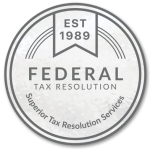Blog > News amp Perspective > TAX INCREASE TAX DECREASE
TAX INCREASE TAX DECREASE
March 5, 2018 - Douglas Myser

Tax increase Tax Decrease. Whether a taxpayer has a tax increase tax decrease is the new talk among tax professionals. We have heard stories of people who thought they would get a decrease the way the new legislation was being proposed, framed, and sold tot he public, only to find out after having a tax professional file their tax return, that they actually owed more tax. Tax increase Tax Decrease.
On December 19, 2017, the House approved the "Tax Cuts and Jobs Act". Although the Senate was expected to quickly follow and approve the measure immediately, there were procedural complications. The bill finally went to President Trump on December 22, 2017. The legislation includes sweeping reform of the IRS Code not seen in 31 years.
Some of the changes in the legislation include a new income tax rate and bracket, increasing the standard deduction, suspending personal and dependency exemptions, increasing the child tax credit, limiting the state and local tax deduction, temporarily reducing the medical expense deduction threshold, and many other changes, including a new deduction for non corporate taxpayers with Qualified Business Income from pass through entities. Even though all of these seem to lower taxes, determining whether you have a tax increase tax decrease, still depends upon the individual situation. If you are one of the unlucky ones who owe a large tax debt a IRS Fresh Start Program might work for you.
The legislation's changes to the income tax brackets will lower tax rates at many income levels. But, determining whether a specific taxpayer will see a tax increase, tax decrease will be dependent upon the impact on a specific taxpayer and on other changes such as suspending personal exemptions and suspending or limiting many itemized deductions as well as the increase in the standard deduction. So whether a taxpayer has a tax increase tax decrease will be determined on a case by case basis.
For businesses, the legislation permanently reduces the corporate tax rate to 21%, repeals the corporate alternative minimum tax, imposes new limits on business interest deductions for large businesses, and makes a number of changes involving expensing and depreciation. Whether the taxpayer sees a tax increase tax decrease will still depend on the individual return. If you were an unlucky one who saw a tax increase and cannot pay it, we know the IRS Tax Code and can determine your Tax Relief options. We are Nationwide and our Tax Resolution process is stress free. Call for a free Tax Resolution Services consultation today. 1-850-270-7370
